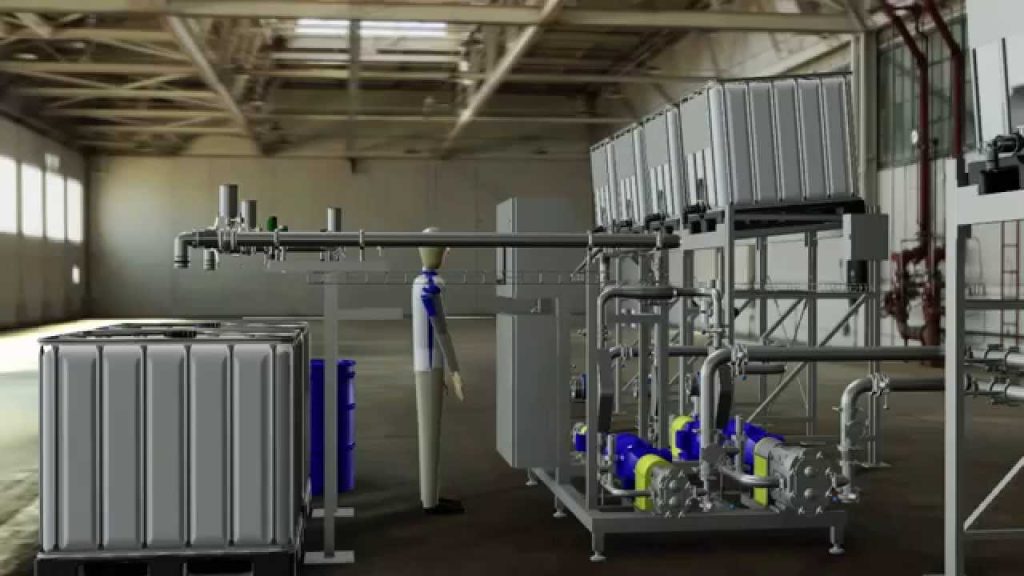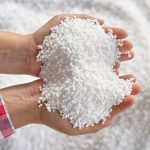In-Line Blending from Tankage – This blending method also requires the use of both component tankage and product tankage. However, the components are pumped simultaneously under flow or flow ratio control through a common blending header. The contents of the product tank are approximately on–specification at any time during the blending operation provided the flow ratios correctly reflect the current component tank properties. An in–line blending system from tankage is shown in the attachment. Each component is ratioed either to a master component on flow control or to a total blending rate signal. Analyzers provide both component and product properties input to an advanced computer blending control system which in turns control the various component flow rates. The blend quality control application calculates the component flow ratios (or component flows) required to meet blend header product quality specifications over the entire blend. Conventional on-line analyzers, such as octane engines (for RON and MON), RVP and distillation are suitable for blend quality control. However, more recently, FT-IR analyzers have been used. From strictly a blending standpoint, a single FT-IR analyzer is capable of monitoring multiple component streams as well as the finished product to allow the control system to make on-stream corrections during the blend operation to reflect minor changes in component qualities.
This type of blending system is frequently used for gasoline.
The following factors should be kept in mind when one is considering in-line blending from tankage:
1. Component tankage permits mixing and testing of components prior to blending. A minimum of two tanks per component is preferred. One tank is assigned for the blend and the other for production rundown. The tank assigned for the blend should be well mixed such that the component quality will not vary over the blend cycle. Provided component tank(s) are well mixed and isolated from production rundown, component qualities can be certified by lab analysis and periodic or continuous sampling is not required during blend operation. If blend component quality varies during blend operation (i.e. tank not well mixed and/or blend tank is not segregated from production rundown) on-line monitoring of component quality should be considered.
2. This type system is very flexible and permits minimizing product quality giveaway if components of appropriate quality are available.
3. Multiple grades per product and seasonal blend variations can often be handled sequentially through one blending header, thereby minimizing blender investment.
4. Tankage requirements to cover working and turnaround requirements may be split between blendstock
components and finished product tankage. Consistent with the concept of minimizing total tankage, component storage is preferred to finished storage since it provides better flexibility to blend multiple finished products.
5. With accurate component flow/ratio control, the blend may be considered “on–spec” as soon as all components are mixed in the blending header. Thus, while the blending is in progress, sampling of this header will permit blend evaluation and fine point blend corrections to optimize the blend. Furthermore, this technique will result in multiple sampling and testing leading to reduced standard deviation for the blend which, in turn, results in much greater test accuracy/reliability and further blend optimization.

Posted inGeneral Concepts

